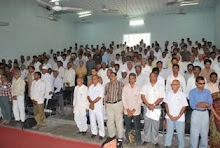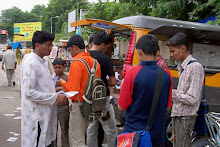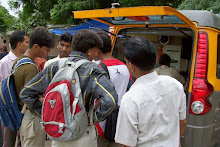Morung Express: Nagaland: Monday, December 18, 2017.
From 2006-07
to 2016-17, out of 24, 896 odd RTI requests, 22, 954 replies were furnished
which comes to a reply rate of 92.20 %.
This was
stated in the annual report of the Nagaland Information Commission (2015-16 and
2016-17) tabled in the just concluded state assembly session here.
The report
informed that there has been a steady increase in the number of RTI
applications received by the various Public Authorities in the state of
Nagaland, which reflects the growing awareness of RTI generated among the
people.
However,
during the period from 2015-16 to 2016-17, there has been a slight decline in
the number of RTI applications received by the various Public Authorities in
the state, although there was an increase in the percentage of information
furnished by the PIOs of various Public Authorities from 91.71% in 2015-16 to
93.72% in 2016-17.
During
2016-17, the number of RTI application received from various levels stands at:
Directorate – 932, districts- 2782, secretariat 354 and other units at 276.
The nature of
information sought through RTI for the year 2015-16 and 2016-17 includes,
financial incumbency list, schemes, verification, land issues, appointment,
recruitment, beneficiaries, Act/Rules, contract /civil works, retirement list
and educational examination.
The most
sought after information in the state during 2015-16 and 2016-17 were relating
to financial matters such as funds sanctioned, funds released, balance amount,
departmental charges and deductions etc.
This was
followed by information relating to schemes, projects, contract works and civil
works.
Also,
information sought relating to incumbency list, recruitment and retirement
list, and examination considering the high rate of employment in the state
seemed to gained popularity, the report added.
According to
the findings and recommendations of the Impact Analysis for the last 10 years,
there is poor awareness about RTI Act, worse in the village than district
headquarters.
Very few
applicants were from villages, even though over 75% of Nagaland’s population
lives in villages. Awareness levels about the RTI also seen very slow in
villages.
It stated
that the applicants, especially from villages said they wanted to use the RTI
Act in order to seek redress of their grievances.
Applicants
are often intimated, threatened and even physically attacked when they file an
RTI application, or as a consequence of their submitting such an application,
the report stated.
There are
certain public authorities/departments such as home/police, health and family
welfare, school, education PWD, RD, social welfare, civil supplies etc who
received a disproportionate share of RTI applications compared to other public
authorities.














































































